| المجموعات الإجتماعية |
| البحث |
| مشاركات اليوم |
 |
| هندسة وصيانة الطائرات Engineering & Aircraft Maintenance يختص بشرح منظومات الطائرة والرد على استفسارات مهندسي الطيران. راجع الفهرس من هنا |
| إضافة رد |
|
|
أدوات الموضوع |
 |
| هندسة وصيانة الطائرات Engineering & Aircraft Maintenance يختص بشرح منظومات الطائرة والرد على استفسارات مهندسي الطيران. راجع الفهرس من هنا |
| إضافة رد |
|
|
أدوات الموضوع |
| مشاركة [ 1 ] | ||||
|
||||
|
|
السلام عليكم ورحمة الله وبركاتة
تنقسم انظمة الهبوط في الطائرات الى ثلاثة اشكال رئيسية وهي: عجلة التوجيه الخلفية او Tailwheel عجلة التوجيه الامامية Tricycle Landing gear وهي الشائعة كونها اسهل في التوجيه واكفأ في الهبوط والاقلاع، ا ما الاخيرة فهي هيئة الدراجة او Bicycle ومثال على ذلك طائرة B-52. والطائرات ذات الاقلاع والهبوط العمودي «كالهاريير» وهي غير محبذة، وهناك عدة هيئات لعجلات الهبوط الرئيسية ، فمنها الأحادي العجلة Single wheel وغالبا يكون في الطائرات الخفيفة كالطائرات الخاصة والمقاتلات. وهناك النوع الشائع : ثنائية العجلات Dual wheel وتجدها في الطائرات كالإيرباص A320 والبوينغ B737 والطائرات الاقليمية. وهناك نموذج معقد مثل العجلتان المترادفتان Tandem wheel وهي مفيدة للمدارج والممرات غير الممهدة التي قد تحتوي على حفر وفوهات صغيرة والارضيات الموحلة والثلجية، ومثل على ذلك نظام الهبوط في طائرة (ساب فيغن) المقاتلة والروسيتين (الميغ-31) والسوخوي Su-32FN. النموذج الاخير نظام الشاحنة او Truck wheel وهو مستخدم في طائرة البوينغ B777 وهو ثقيل نوعا ما لكنه فعال. وهناك طائرات ضخمة (جامبو) للشحن تستخدم طابورا من العجلات الرئيسية والسبب يرجع الى توزيع الحمل بالتساوي عليها كي تتفادى الطائرة غرس عجلاتها بأرضية المدرج وساحة الوقوف وتحطيمها. **منقول** |
|||
|
|

|
| مشاركة [ 2 ] | ||||
|
||||
|
|
لله يعطيك العافية علي النقل
مع التحيه |
|||
|
|

|
| مشاركة [ 3 ] | ||||
|
||||
|
|
شكرا أخي على المعلومات ولك خالص التحية
|
|||
|
|

|
| مشاركة [ 4 ] | ||||
|
||||
|
|
شكرا اخي طارق الشيخ علي المعلومات--
اود ان اضيف لمعلوماتك بأنه عندما يكون هنالك مجموعة من الtyres في one main strut هذا النظام يسمى بالبوجي ( عذرا لست متأكد من احرف الاسم بالانجليزية ) |
|||
|
|

|
| مشاركة [ 5 ] | |||
|
|||
|
Aircrafts Mechanic
|
شكرا أخي على المعلومات =)
|
||
|
|

|
| مشاركة [ 6 ] | ||||
|
||||
|
|
|
|||
|
|

|
| مشاركة [ 7 ] | ||||
|
||||
|
|
معلومات حلوة ومفيدة ...يعطيك الف عافية .....
|
|||
|
|

|
| مشاركة [ 8 ] | ||||
|
||||
 |
شكرا جزيلا على المعلومات المفيدة والجميلة
تقبل جزيل الشكر و التقدير تحياتي |
|||
|
|

|
| مشاركة [ 9 ] | ||||
|
||||
|
|
أخواني الكرام شكراً لكم علي المرور والتعقيب  |
|||
|
|

|
| مشاركة [ 10 ] | ||||
|
||||
|
|
Tailwheel or Taildragger Gear Though the tricycle arrangement may be most popular today, that was not always the case. The tailwheel undercarriage dominated aircraft design for the first four decades of flight and is still widely used on many small piston-engine planes. The taildragger arrangement consists of two main gear units located near the center of gravity (CG) that support the majority of the plane's weight. A much smaller support is also located at the rear of the fuselage such that the plane appears to drag its tail, hence the name. This tail unit is usually a very small wheel but could even be a skid on a very simple design. 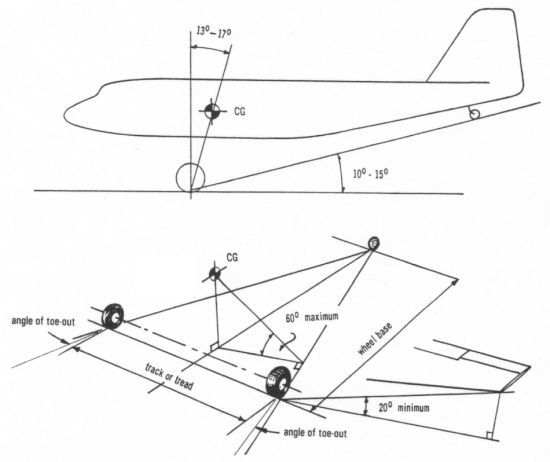 Taildragger or tailwheel landing gear What makes this form of landing gear most attractive is its simplicity. The gear are usually relatively lightweight, and the two main gear can also be easily encased in streamlined fairings to produce low drag in flight. Another potential advantage results from the fact that the plane is already tilted to a large angle of attack as it rolls down the runway. This attitude helps to generate greater lift and reduce the distance needed for takeoff or landing. This attitude is also an advantage on propeller-driven planes since it provides a large clearance between the propeller tips and the ground. Furthermore, taildragger planes are generally easier for ground personnel to maneuver around in confined spaces like a hangar. However, the greatest liability of this landing gear layout is its handling characteristics. This design is inherently unstable because the plane's center of gravity is located behind the two main gear. If the plane is landing and one wheel touches down first, the plane has a tendency to veer off in the direction of that wheel. This behavior can cause the aircraft to turn in an increasingly tighter "ground loop" that may eventually result in scraping a wingtip on the ground, collapsing the gear, or veering off the runway. Landing a taildragger can be difficult since the pilot must line up his approach very carefully while making constant rudder adjustments to keep the plane on a straight path until it comes to a stop. Many taildragger designs alleviate these handling problems by fitting a tailwheel that can be locked instead of swiveling on a castor. Locking the tailwheel helps keep the plane rolling in a straight line during landing. 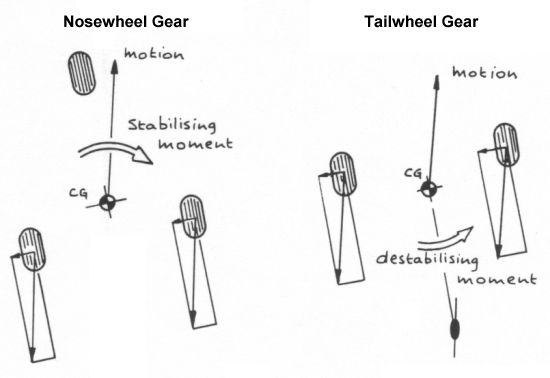 Stable and unstable behavior of tricycle gear vs. taildragger gear Another disadvantage of the taildragger is poor pilot visibility during taxiing since he is forced to peer over a nose that is tilted upward at a steep angle. It is also often difficult to load or unload heavy cargos because of the steep slope of the cabin floor. Similarly, pilots and passengers are forced to walk uphill during boarding and downhill after arrival. Many aircraft also rely on gravity to bring fuel from tanks to the engine, and some planes have been known to have difficulty starting the engine because it is uphill from the fuel supply. 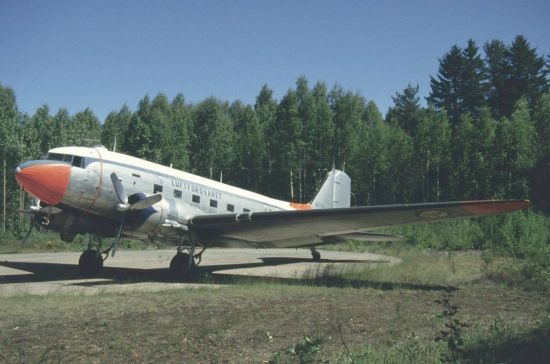 DC-3 Dakota airliner illustrating its taildragger landing gear Good examples of taildragger aircraft include the Spitfire and DC-3 of World War II. Tricycle or Nosewheel Gear Now the most popular landing gear arrangement, the tricycle undercarriage includes two main gear just aft of the center of gravity and a smaller auxiliary gear near the nose. The main advantage of this layout is that it eliminates the ground loop problem of the taildragger. This arrangement is instead a stable design because of the location of the main gear with respect to the center of gravity. As a result, a pilot has more latitude to land safely even when he is not aligned with the runway. 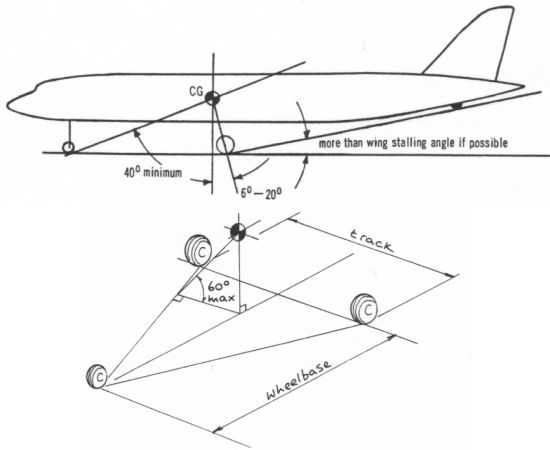 Tricycle or nosewheel landing gear Furthermore, the tricycle arrangement is generally less demanding on the pilot and is easier to taxi and steer. The tricycle gear also offers much better visibility over the nose as well as a level cabin floor to ease passenger traffic and cargo handling. A further plus is that the aircraft is at a small angle of attack so that the thrust of the engine is more parallel to the direction of travel, allowing faster acceleration during takeoff. In addition, the nosewheel makes it impossible for the plane to tip over on its nose during landing, as can sometimes happen on taildraggers. The greatest drawback to tricycle gear is the greater weight and drag incurred by adding the large nosewheel strut. Whereas many taildraggers can afford to use non-retracting gear with minimal impact on performance, planes with nosewheels almost always require retraction mechanisms to reduce drag. Some planes with tricycle gear also have difficulty rotating the nose up during takeoff because the main wheels are located so close to the elevator, and there may be insufficient control effectiveness. Similarly, the closeness to the rudder reduces its effectiveness in counteracting crosswinds. Another critical factor when designing tricycle gear is to properly balance the load carried by the main gear versus the nosewheel. Too little load on the main wheels reduces their braking effectiveness while too little on the nosewheel reduces its steering effectiveness. Careful balancing of weight is also important to prevent the plane from tipping back on its tail while at rest on the ground. 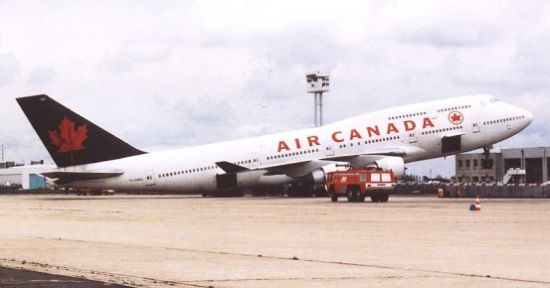 Danger of tail sitting exemplifided by an improperly loaded 747 There are many examples of aircraft with tricycle landing gear, including the F-16 and Cessna 172. Bicycle Gear A relatively uncommon landing gear option is the bicycle undercarriage. Bicycle gear features two main gear along the centerline of the aircraft, one forward and one aft of the center of gravity. Preventing the plane from tilting over sideways are two small outrigger gear mounted along the wing.  Bicycle landing gear The only real advantage of bicycle gear is lower weight and drag than either the taildragger or tricycle arrangements. Bicycle gear are also useful on planes with very long and slender fuselages where there is little room for more traditional undercarriage arrangements. Unfortunately, bicycle gear are very demanding on the pilot who must maintain a very level attitude during takeoff and landing while carefully managing airspeed. The pilot must also compensate for any rolling motion that could cause the plane to land unevenly on one of the outrigger gear, and crosswinds are particularly difficult to deal with. 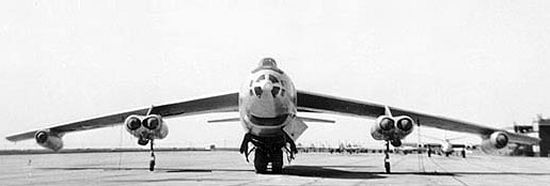 Bicycle landing gear of the B-47 Stratojet Because of these limitations, bicycle gear are generally limited to planes with high aspect ratio wings that generate high lift at low angles of attack. Good examples of such planes are large bombers with a narrow fuselage and large wingspan like the B-47. Another common application of the bicycle undercarriage is aboard vertical takeoff and landing designs like the Harrier. Here, the gear layout provides safety and stability in case of an engine failure during landing. Single Main Gear A special subcategory of the bicycle undercarriage is the single gear. This layout features a single large gear unit and a much smaller auxiliary tailwheel along the centerline. Outriggers are again provided for stability.  Single main landing gear This design is particularly simple, lightweight, and low drag and may even include skids rather than wheels. This simplicity makes the gear arrangement attractive for use on light planes like gliders and sailplanes, but the single main gear is generally impractical for larger aircraft.  U-2 Dragon Lady and its landing gear arrangement Perhaps the best known application of a single main gear arrangement is the U-2 reconnaissance plane. This aircraft has a single large gear unit near the center of gravity plus a much smaller tailwheel. Two additional outriggers called "pogos" are attached by ground crew to keep the plane from tipping during taxi, but these are removed prior to takeoff. Quadricycle Gear Quadricycle gear are also very similar to the bicycle arrangement except there are four main gear roughly equal in size and mounted along the fuselage. 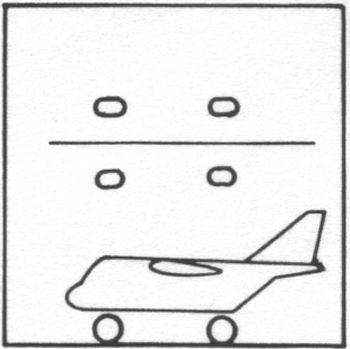 Quadricycle landing gear Like bicycle gear, the quadricycle undercarriage also requires a very flat attitude during takeoff and landing. This arrangement is also very sensitive to roll, crosswinds, and proper alignment with the runway. The most significant advantage of quadricycle gear is that the plane's floor can be very close to the ground for easier loading and unloading of cargo. However, this benefit comes at the price of much higher weight and drag than bicycle gear. 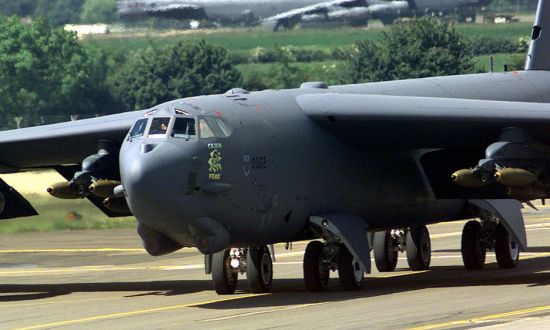 Quadricycle landing gear of the B-52 Stratofortress Quadricycle gear are sometimes used on cargo planes, but probably the most well known example is the B-52 bomber. This aircraft employs a cross between the quadricycle and bicycle arrangements since it has four main gear plus two small outriggers near the wingtips. Multi-Bogey Gear A final variation that is worth mentioning is the use of multiple wheels per landing gear strut. It is especially common to place two wheels on the nose strut of the tricycle arrangment to provide safety and steering control in case of a tire blowout. This additional tire is particularly useful on carrier-based aircraft where two nosewheels are a requirement. Multiple wheels are also often used on main gear units for added safety, especially on commercial airliners.  Multi-bogey landing gear When multiple wheels are placed on the same gear unit, they are attached together on a structural device called a bogey. The heavier the aircraft becomes, the more wheels are typically added to the bogey to spread the plane's weight more evenly across the runway pavement. In general, a plane weighing less than 50,000 lb (22,680 kg) has only one wheel per main gear strut. Aircraft weighing up to 200,000 lb (90,720 kg) usually carry two wheels per strut. On planes weighing up to 400,000 lb (181,440 kg), a four-wheel bogey is typical. Aircraft of greater weight often carry four bogeys, each with four to six wheels. 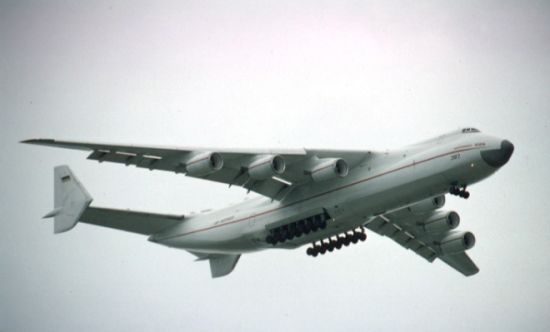 The many, many, many landing gear wheels of the An-225 The best examples of multi-bogey aircraft are large mega jets like the An-225. This mammoth cargo plane has seven pairs of wheels on each main gear assembly plus four nosewheels, combining for a total of 32 tires! Another good example is the Boeing 747. The 747 is equipped with four main gear units, each with four-wheel bogies, plus twin nosewheels so that the plane's weight is spread across 18 wheels.
|
|||
|
|

|
| مشاركة [ 11 ] | ||||
|
||||
|
|
مشكور والله يجزاك الف خير والله انها معلومات مفيدة وجديدة علي
ومشكووووووووووووووررررررررررررر |
|||
|
|

|
| إضافة رد |
 هندسة وصيانة الطائرات Engineering & Aircraft Maintenance
هندسة وصيانة الطائرات Engineering & Aircraft Maintenance
|
|
|
|
|
|
 المواضيع المتشابهه
المواضيع المتشابهه
|
||||
| الموضوع | المنتدى | |||
| لكل من يبحث عن دورات الــ Type Rating أيربص او بوينج بالاردن | دراسات هندسة الطيران وشهادات العمل ورخص الصيانة الفنية | |||
| Aircraft Propellers - ii (Type of propellers | هندسة وصيانة الطائرات Engineering & Aircraft Maintenance | |||
| أنـــــواع الــــــ Landing Gear | دروس تقنية وصيانة الطائرات | |||
| هل سألت نفسك يوماً هذا السؤال ؟؟؟؟((أدخل وجاوب)) | هندسة وصيانة الطائرات Engineering & Aircraft Maintenance | |||
| JetBlue A320 Emergency Landing | هندسة وصيانة الطائرات Engineering & Aircraft Maintenance | |||